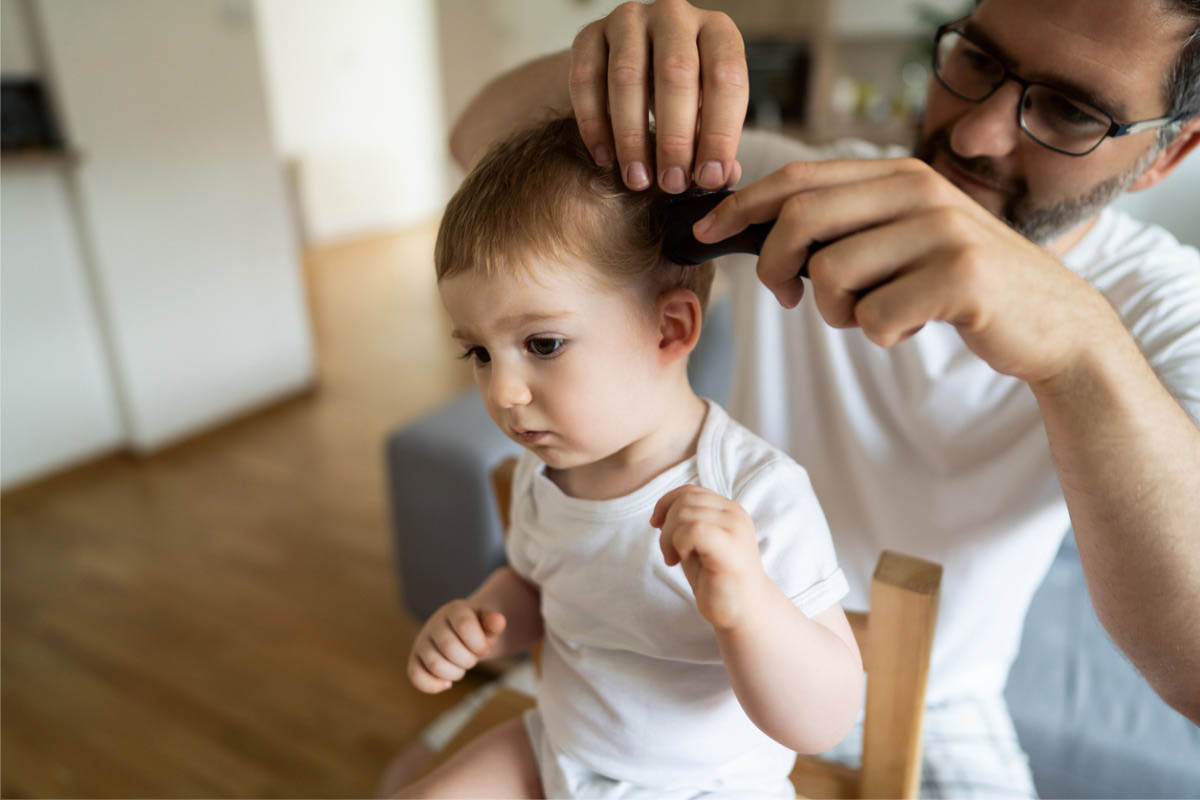aDepartment of Psychiatry, Milton S. Hershey Medical Center/Penn State College of Medicine, Hershey, Pennsylvania
bNew York Institute of English and Business, New York, New York
cJamaica Hospital Medical Center, Richmond Hill, New York
dPenn State College of Medicine, Hershey, Pennsylvania
*Corresponding author: Ankit Jain, MD, Department of Psychiatry, Milton S. Hershey Medical Center/Penn State College of Medicine, 500 University Drive, Hershey, PA 17033 ([email protected]).
Prim Care Companion CNS Disord 2021;23(2):20l02877
To cite: Jain A, Bodicherla KP, Bashir A, et al. COVID-19 and obsessive-compulsive disorder: the nightmare just got real. Prim Care Companion CNS Disord. 2021;23(2):20l02877.
To share: https://doi.org/10.4088/PCC.20l02877
© Copyright 2021 Physicians Postgraduate Press, Inc.
Obsessive-compulsive disorder (OCD) is an anxiety disorder defined by persistent intrusive ideas, thoughts, impulses, or images (obsessions) that often results in worry and anxiety and performing compulsive rituals repetitively. The aim of compulsions is to reduce or alleviate anxiety.1 At least 50% of patients with OCD have a comorbid disorder like anxiety disorder or unipolar mood disorder.2 OCD is the sixth most disabling psychiatric illness with a lifetime prevalence of 2.3% among US adults.3 The content of obsessions is not random and is usually triggered by external events related to current concerns. One of the main clusters of symptoms of OCD involves fear of contamination and washing compulsions.4 The symptoms of OCD are varied, and there are many subtypes of OCD. Abramowitz and Reuman2 documented 5 main dimensions of OCD as follows: (1) obsessions about being responsible for causing or failing to prevent harm, checking compulsions, and reassurance seeking; (2) symmetry obsessions and ordering and counting rituals; (3) contamination obsessions and washing and cleaning rituals; (4) repugnant obsessions concerning sex, violence, and religion; and (5) hoarding, which comprises obsessions about acquiring and retaining objects and associated collecting compulsions. In other words, OCD has different subtypes including washing, checking, obsessing, neutralizing, ordering, and hoarding. On March 11, 2020, the coronavirus disease 2019 (COVID-19) worldwide outbreak was classified as a pandemic by the World Health Organization (WHO).5 With the entire world on lockdown and living in social isolation, a state of fear swept around the globe. Social media and news outlets were flooded with numerous advisories issued by governments. While the influx of COVID-19–related news was meant to control the spread of the virus, it caused significant challenges with regard to the mental health of people around the globe.6
There is limited research on how a pandemic of this scale affects different aspects of OCD. Some challenges involved may include underdetection of its impact due to underavailability of clinical services, relapse of symptoms due to added psychosocial stressors during the pandemic, and hoarding behaviors due to increased incidence of the general population acquiring germicidal supplies and cleaning materials.
To date, there is little research data on how best to manage patients with OCD who develop an exacerbation of symptoms in response to the current COVID-19 pandemic. Several factors might hinder the traditional modes of delivery of psychiatric care in the current context of COVID-19 including the effect of staff shortages and public health containment measures. The varied ways in which patients may present for evaluation and treatment in hospitals and clinics are being considered with these factors in mind.7 Alternative ways to deliver care, such as using telemedicine with videoconferencing, should be considered.8 Here, we present 2 cases in which there was significant deterioration in symptoms of OCD in the context of the COVID-19 pandemic. To our knowledge, these are the first reported cases of worsening of OCD in the context of COVID-19 infection.
Case 1
A 73-year-old white woman with history of OCD, generalized anxiety disorder, and major depressive disorder presented to the clinic with worsening of her symptoms since the COVID-19 pandemic began. Her home medication was sertraline 150 mg/d. No other significant medical or surgical history was noted, and baseline laboratory results were within normal limits. She reported that she experienced recurrent urges to clean her apartment, which caused her significant anxiety. She spent several hours per day cleaning her small 1-bedroom apartment, including wiping her kitchen floor with disinfectant wipes approximately 5 times per day and vacuuming for hours until the charge on her vacuum was depleted. She would often wake up at night and clean. The patient washed her hands approximately 20 times per day and also resorted to washing her hands and face with disinfectant wipes. The patient’s hands were noted to be excoriated and red, and she reported that they would often bleed because of the amount of times that she washed them. The patient was given the Yale-Brown Obsessive-Compulsive Scale,9 which she refused to fill out. Treatment options were discussed, and she was made aware that OCD is often resistant to medical therapy. Her dose of oral sertraline was increased from 150 mg/d to 200 mg/d over the course of 12 weeks with some improvement. The mainstay of treatment in OCD is often cognitive-behavioral therapy (CBT) with exposure and response prevention. The patient was advised to seek consultation from a therapist specializing in CBT with exposure and response prevention therapy; however, she refused to return for follow-up. Overall, very poor compliance with medication and therapy recommendation was noted, and the patient was lost to follow-up.
Case 2
A 36-year-old white man with history of major depressive disorder presented to the inpatient unit with suicidal ideations. Upon interview, the patient endorsed recent suicidal ideation with a plan to use the guns in his home to shoot himself in the context of 6 months of increased anxiety and depression, which he attributed to the COVID-19 pandemic. The patient started to worry excessively and have panic attacks approximately every day. He found it difficult to control his worries about his health, social distancing, current events on the news, and cleanliness during the pandemic. He described listening to the news about COVID-19 and that he could not stop thinking about his room being too dirty, even when it was not, and carried on with the act of cleaning his room about 8–10 times a day, which consumed approximately 6 hours of his day. He continued to work despite these symptoms but said he felt that his coworkers noticed a change in him. His wife also noticed that he became more anxious and that his mood had changed and asked him to seek help. The patient was started on fluvoxamine 50 mg/d, which was titrated up to 100 mg/d with some relief in his symptoms. He was discharged with outpatient follow-up. Referral for outpatient CBT was also made. On a follow-up call, he reported that fluvoxamine 100 mg/d and CBT had provided significant relief of his OCD symptoms.
Discussion
The cases presented here highlight the typical scenarios of worsening of OCD in the setting of an identifiable stressor, specifically the COVID-19 pandemic. While significant improvement was noted in 1 patient, the other was poorly compliant and was eventually lost to follow-up. Whenever the strategies to fight an infection involve repetitive behaviors, there is a risk of increasing obsessional disorders. It might not be evident in the active phase of the outbreak due to underdetection, disruption of medical services, and alternate public health priorities.10
Relapse of certain compulsive behaviors is also central in this context. Of the multiple symptom domains, obsessions of contamination and compulsive handwashing are among the most common.11 Also, it has been shown that although these domains respond well to pharmacotherapy and psychotherapy, relapse tends to occur in cases of stress due to external or environmental cues.11 Specific compulsive behaviors can be complicated by factors such as the increased demand for sanitizers, soaps, and gloves, as handwashing is considered to be one of the safest precautions to prevent COVID-19. Media outlets have stressed the importance of hygienic measures, washing, and prevention of contamination. While these measures seem easy to follow, what about those who already have their doubts with regard to hygiene and the compulsive need to stay clean, such as patients with OCD? WHO reported an increase of patients with obsessive-compulsive symptoms in outpatient departments in countries such as China, the United States, the United Kingdom, Italy, and India, but scientific literature on the statistics has yet to be established.10
CBT and antidepressants are the mainstays of treatment but may need tailoring to address specific challenges in the context of the current pandemic. Time-occupying activities can take the focus off of compulsive behaviors, especially during the pandemic.12 The shift toward virtual health care services in the time of social distancing raises concerns about how effective these modalities are compared to traditional services. These concerns have been addressed in randomized controlled trials,12,13 which have shown virtual services to be effective in the delivery of various treatments including psychotherapy.
The COVID-19 pandemic has uprooted health care and medical education14 and has resulted in psychological stress and exacerbations of many psychiatric conditions, with documented cases of mental health crises.15 Of the many psychosocial implications of the COVID-19 pandemic including panic, health anxiety, mass hysteria, and loneliness of isolation, the prominence of obsessive-compulsive symptoms has largely been neglected. We can only assume how much distress the pandemic has caused those with OCD. More research and education are needed for clinicians, patients, and the general public regarding the effects of the COVID-19 pandemic on patients with OCD.
Received: November 22, 2020.
Published online: March 18, 2021.
Potential conflicts of interest: None.
Funding/support: None.
Patient consent: Verbal consent was received from the patients to publish the case reports, and information has been de-identified to protect anonymity.
References (15)

- Abramowitz JS, Khandker M, Nelson CA, et al. The role of cognitive factors in the pathogenesis of obsessive-compulsive symptoms: a prospective study. Behav Res Ther. 2006;44(9):1361–1374. PubMed CrossRef NLM
- Abramowitz JS, Reuman L. Obsessive compulsive disorder. In: Zeigler-Hill V, Shackelford TK, eds. Encyclopedia of Personality and Individual Differences. Springer; 2020:3304–3306.
- Harvard Medical School National Comorbidity Survey. Lifetime prevalence DSM‐IV/WMH‐CIDI disorders by sex and cohort. 2007. Accessed February 12, 2021. https://www.hcp.med.harvard.edu/ncs/ftpdir/NCS-R_Lifetime_Prevalence_Estimates.pdf
- Rachman S. A cognitive theory of obsessions. Behav Res Ther. 1997;35(9):793–802. PubMed CrossRef NLM
- Stein DJ, Costa DLC, Lochner C, et al. Obsessive-compulsive disorder. Nat Rev Dis Primers. 2019;5(1):52. PubMed CrossRef NLM
- Jolly TS, Pandian GSDB, Batchelder E, et al. Posttraumatic stress disorder exacerbation as a result of public masking in times of COVID-19. Prim Care Companion CNS Disord. 2020;22(6):20l02828. PubMed CrossRef NLM
- Jolly T, Batchelder E, Liu A, et al. Managing COVID+ patients on inpatient adolescent psychiatry unit—a unique challenge. Int J Psychiatr Ment Health. 2020;2:17–21. CrossRef
- Kumar A, Somani A. Dealing with corona virus anxiety and OCD. Asian J Psychiatr. 2020;51:102053. PubMed CrossRef PubMed CrossRef NLM
- Goodman WK, Price LH, Rasmussen SA, et al. The Yale-Brown Obsessive Compulsive Scale. I. Development, use, and reliability. Arch Gen Psychiatry. 1989;46(11):1006–1011. PubMed CrossRef NLM
- Kluger J. The Coronavirus Pandemic May Be Causing an Anxiety Pandemic. Time. March 26, 2020. http://time.com/5808278/coronavirus-anxiety
- Cordeiro T, Sharma MP, Thennarasu K, et al. Symptom dimensions in obsessive-compulsive disorder and obsessive beliefs. Indian J Psychol Med. 2015;37(4):403–408. PubMed CrossRef NLM
- Drummond LM, Edwards LJ. Obsessive Compulsive Disorders: All You Want to Know About OCD for People Living With OCD, Carers, and Clinicians. Cambridge University Press; 2018.
- Egede LE, Acierno R, Knapp RG, et al. Psychotherapy for depression in older veterans via telemedicine: a randomised, open-label, non-inferiority trial. Lancet Psychiatry. 2015;2(8):693–701. PubMed CrossRef PubMed CrossRef NLM
- Batchelder E, Piper L, Sarwar S, et al. Psychiatric medical education in the age of COVID-19: the Penn State health experience. Prim Care Companion CNS Disord. 2020;22(5):20com0277. PubMed CrossRef PubMed CrossRef
- Jolly TS, Batchelder E, Baweja R. Mental health crisis secondary to COVID-19-related stress: a case series from a child and adolescent inpatient unit. Prim Care Companion CNS Disord. 2020;22(5):20l02763. PubMed CrossRef PubMed CrossRef NLM
Please sign in or purchase this PDF for $40.



